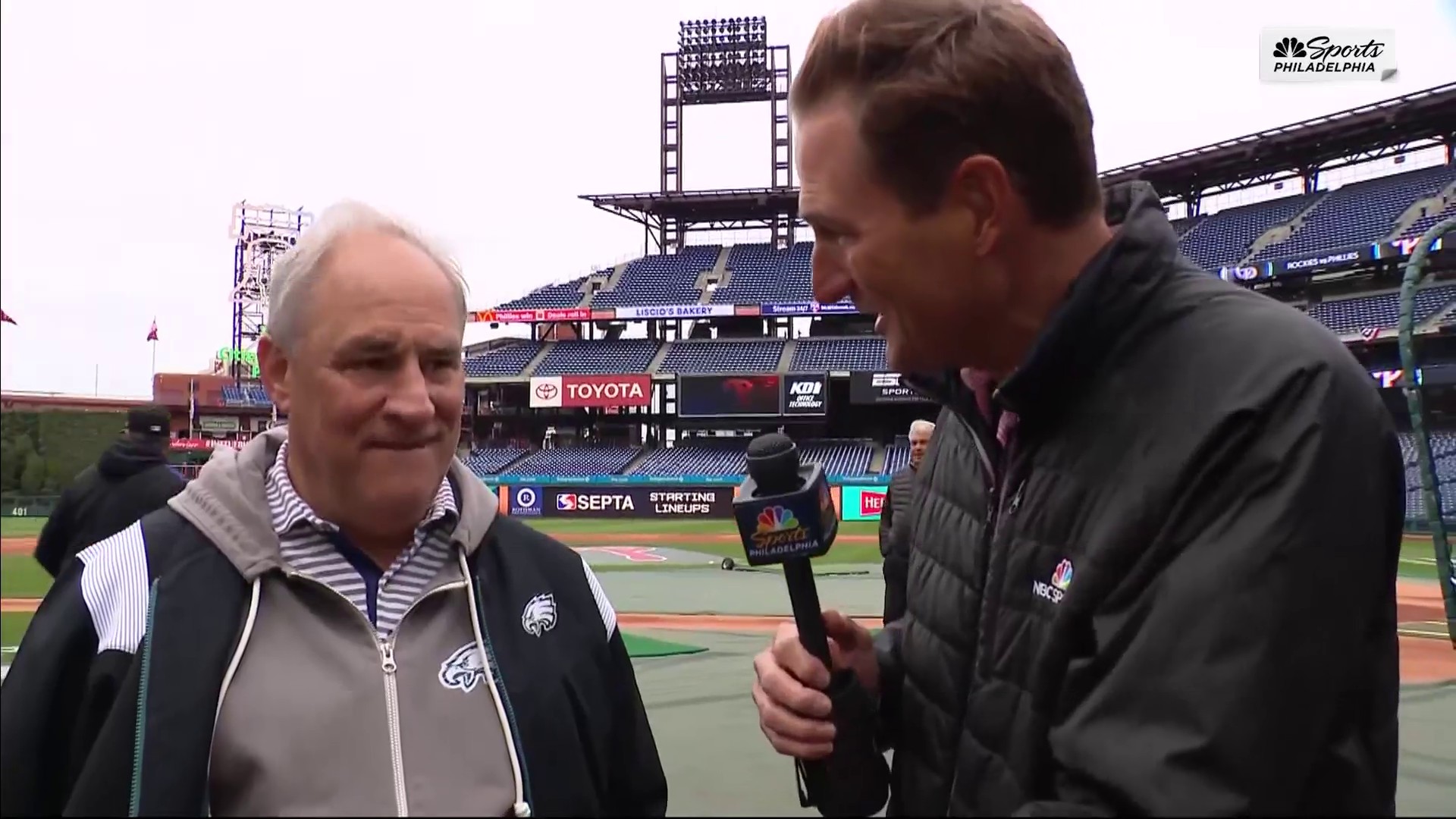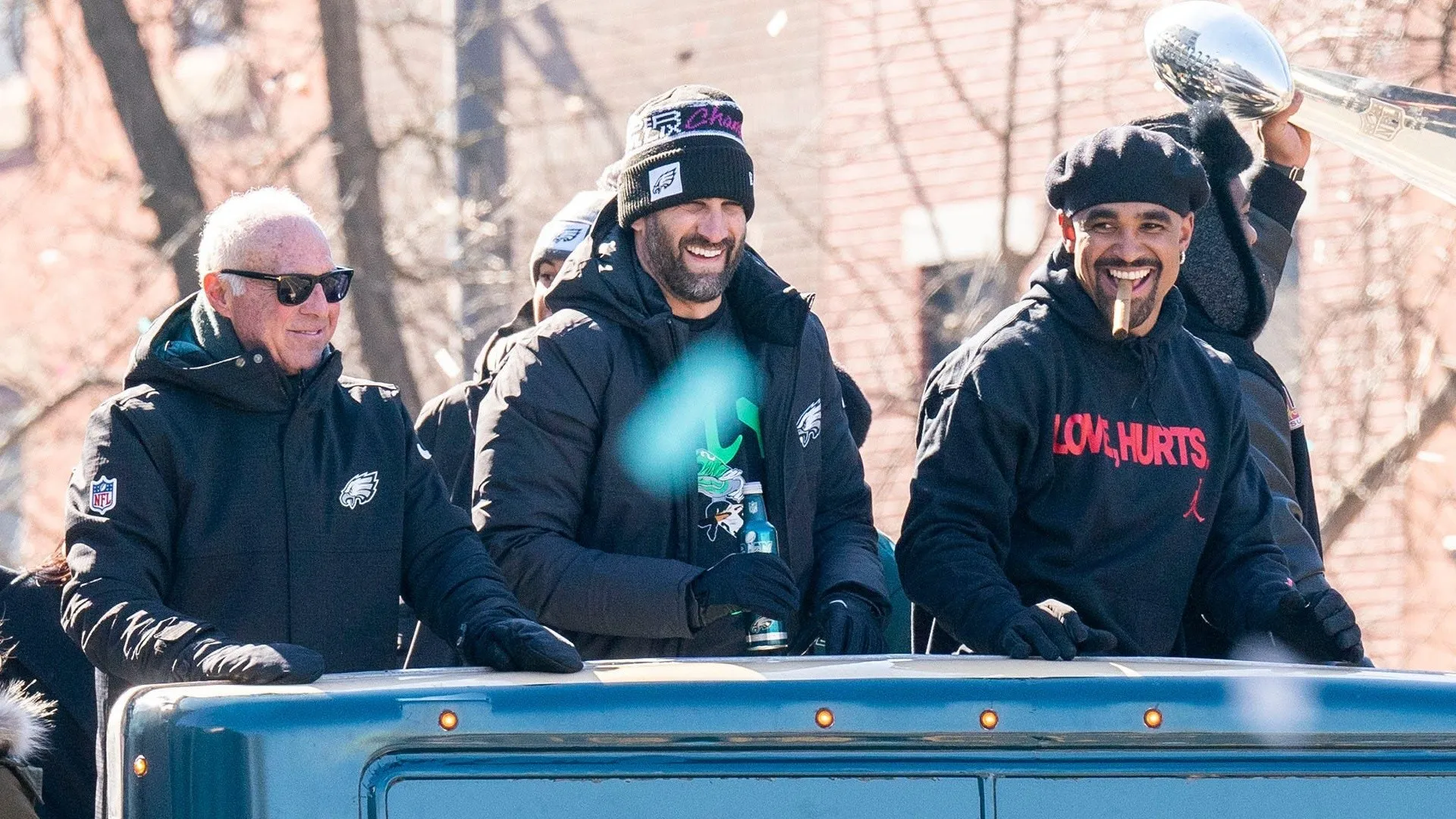Nick Sirianni said he didn’t see a correlation between the Eagles’ struggles to stop the run on Sunday and the lack of playing time for Jordan Davis.
The numbers clearly say otherwise.
With Davis on the field, the Lions had 14 rushing plays for 43 yards (3.1) and without him they had 14 for 138 yards (9.9)
Stay in the game with the latest updates on your beloved Philadelphia sports teams! Sign up here for our All Access Daily newsletter.
Even when you factor in the fact that two of those 14 rushes with Davis on the field were 1-yard touchdowns — which helps the average without being winning plays — it’s still safe to say there was a clear correlation between Davis’s playing time and the Eagles’ success or failure in rush defense.
The real question is about causation.
Sure, there were some other factors — like the Lions’ commitment to the run even when they were down big — but Davis played well.
And it stands to reason that the best run-stuffing defensive lineman in college football is going to be pretty good at it in the NFL too. He showed that Sunday afternoon in his limited snaps.
NFL
“He did a good job when he was in there,” Eagles defensive coordinator Jonathan Gannon said. “I thought that he played his technique well, and what we're asking him to do, he did a good job of executing.
“The 22 snaps, those guys all played, the five D-tackles that were up. They'll continue to all play, and I think Jordan will keep maximizing his opportunities.”
But will Davis get more opportunities?
Because he should.
Of the five defensive tackles who were active on Sunday in Detroit, Davis got the fewest snaps. Fletcher Cox led the way with 39, followed by Javon Hargrave (38), Milton Williams (33), Marlon Tuipulotu (29) and finally Davis (22).
This summer Tuipulotu showed great improvement and earned a spot in the rotation. But did anyone think he’d have seven more snaps than the guy the Eagles traded up for in the first round? That’s not a shot at Tuipulotu, who had one of the game’s best pressures, but that shouldn’t happen.
A key note here is that just four of Davis’s 22 snaps came in the Eagles’ four-man front. All the others came either in goal line formations or in the Eagles’ bear front with Davis as the nose tackle between two 3-techniques.
Even on the very first drive of the game — it was a 9-play, 75-yard touchdown drive from the Lions — when the Eagles removed Cox and Hargrave, the next two guys rotating in were Williams and Tuipulotu in that four-man front. We didn’t see Davis until the Lions were on the goal line.
If Davis doesn’t get more snaps in the four-man front going forward, he sort of turns into a sub-package player. Not a great way to use a first-round pick.
“I feel comfortable with Jordan playing in the three- and four-man fronts,” Gannon said. “He's a defensive tackle and can play all those techniques within all those schemes. Moving forward he'll be playing in everything that we do.”
Dating back to his time at Georgia, there were questions about how much Davis should be playing in any given game. The Bulldogs rotated too and Davis averaged 25.2 snaps per game in 2021 after averaging 32.9 in 2020. So it’s not like he was going to come to the NFL and all of a sudden play 50 snaps per game.
But one of the biggest issues for Davis at the collegiate level was his conditioning, something he has been working on since entering the NFL. After his NFL debut, it didn’t seem like that was an issue.
“Whenever my number is called, I know I’m ready,” Davis said. “Obviously as you go on you’re going to feel a little bit tired. But that’s the game, right? Everybody’s tired. Conditioning-wise, I feel great.”
It’s just Week 1, so it’s not time to panic yet. But we’ll be watching how Gannon uses Davis all season.
Subscribe to the Eagle Eye podcast
Apple Podcasts | Google Play | Spotify | Stitcher | Art19 | Watch on YouTube


